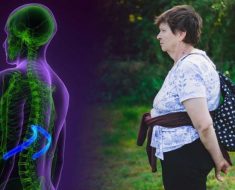A highly contemplative and insightful closing discussion took place on the final day of the HIMSS & Health 2.0 Middle East Digital event, during the ‘International Views from the Top: A New Era for Digital Health’ session.
Bringing the digital conference to a close, notable health leaders from around the world took the opportunity to reflect on some of the main lessons learned from COVID-19 and how digital transformation will continue to play a key role in improving the health and well-being of citizens well beyond the pandemic.
The speakers were Dr Nahar Muzaki Al-Azemi, secretary-general Saudi Health Council, Lav Agarwal, joint secretary, Ministry of Health and Family Welfare, Tim Kelsey, senior vice president, Analytics HIMSS, Dr Ahmed Balkhair, advisor for digital transformation, Ministry of Health, Kingdom of Saudi Arabia, Hal Wolf, president & CEO, HIMSS and Dr Ramesh Krishnamurthy, senior advisor, Division of Data, Analytics and Delivery, World Health Organization.
WHY IT MATTERS
The collaboration of government agencies, health organisations and the World Health Organization is needed now more than ever to exchange best practices and support the effective implementation of evidence-based digital health technologies and services. In order to maintain efforts made and build resilience in a post-COVID-19 world, nations will look to promote clinical and consumer engagement, build a supportive policy environment, make the most of evidence and evaluation, strengthen cybersecurity and push the frontiers of interoperability.
Digital as the enabler
Starting the discussion with his reflections on the strategy of digital services during COVID-19, Kelsey said: “There has been an extraordinary acceleration and access to and use of digital services. But technology is just an enabler.
“What is most remarkable has been the way that people have used these digital tools, whether they’re patients or those delivering services, to cut through all conventions, sweep away bureaucratic inertia, and red tape, and innovate in treatment and prevention on a scale that few people if anybody would have thought possible.
“The story of the COVID response is, at heart, a story of collaboration of what is possible when people work together with common purpose, empowered by technology, globally, nationally, locally,” noted Kelsey.
Agarwal added: “COVID became a new normal for us to understand that digital health is going to stay and digital health will facilitate primary availability of health services at the cutting edge.”
On the impact of COVID, Dr Ramesh said: “The national structures, such as digital health authorities, and so on, whether they presented or not in these countries, digital technologies penetrated fast, because saving lives was the motive.
“Consequently, all hands on deck took on a new meaning. In digital health, all kinds of other technologies, even some from the 1990s are all coming to use. Caring for people and saving lives were the drivers. So technology was in its true sense, an enabler, not the endpoint.”
The increase of inter-sectoral collaboration was highlighted by the panel as one of the positive features to arise from COVID-19, Dr Ramesh explained this: “If you only catalogue all of the world’s innovations and inventions in digital health, it is amazing. It’s really truly amazing and cross-sectoral and multi-sectoral engagements became real because saving lives needed lockdowns, it needed act enactments and public health law taking effect.”
Promoting digital opportunities in the Kingdom
Updating viewers on Saudi Arabia’s preparedness for COVID-19, Dr Muzaki Al-Azemi said: “Even before we got the first COVID-19 case in the country, we had the communication with the public health, the entities and ministries and WHO in order to prepare. There were a lot of proactive policies.
“There were a lot of platforms and applications, which were launched to combat this crisis. For example, applications which give instructions and advice and also tracks social distancing. I guarantee that the Saudi citizens and community will definitely make use of this crisis and will adopt in changing their lifestyle,” states Dr Muzaki Al-Azemi.
Using IoT in the delivery of medication
Dr Balkhair also spoke about the rapid uptake of technologies in the delivery of medication and why they are here to stay: “Currently we are working towards achieving at the end of COVID, the IoT to monitor patients remotely from home for those who have symptoms and also how to deliver medication.
“Now over the last year, we’ve had more than 50 million bookings. We found that we have to integrate everything. All the results are connected to have interoperability and to create efficiencies for telemedicine or clinic services.”
International collaboration to maintain momentum
International collaboration and sharing of knowledge has been critical to managing such a novel virus. Dr Muzaki Al-Azemi elaborates on this point: “I think the way forward is about collaboration and exchanging information between the countries and the communities. The Global Digital Health Partnership is one of the great initiatives that facilitates communication.”
The panel was also asked for their predictions for five years from now and their hopes for what will happen for patients due to the digital transformation taking place, Dr Ramesh responded: “The seamless interchange between a patient and a provider, is to be seamless, and confidence has to be built.
“I think that will happen and technology should be on the backdrop and not in the front end. So technology will fade away because it will become the new infrastructure, you will not be looking for a wire in your house, the wires are all buried inside a wall.”
Wolf concluded the session with his final thoughts on how to take advantage of our learnings from the digital transformation experienced during the pandemic, as well as learnings from the conference: “It is not just about the technology. It is never just about the technology. It is always about people process and technology.
“So to take advantage of the power of digital health solutions to help close this gap, it will require not just new innovations in technology, but in new ways to think about the culture of care and about how we train care providers and operate inside our own systems.”
You can find more coverage of this year’s HIMSS & Health 2.0 Middle East Digital Conference & Exhibition and learn more about the latest news and developments from the event here.
Source: Read Full Article





